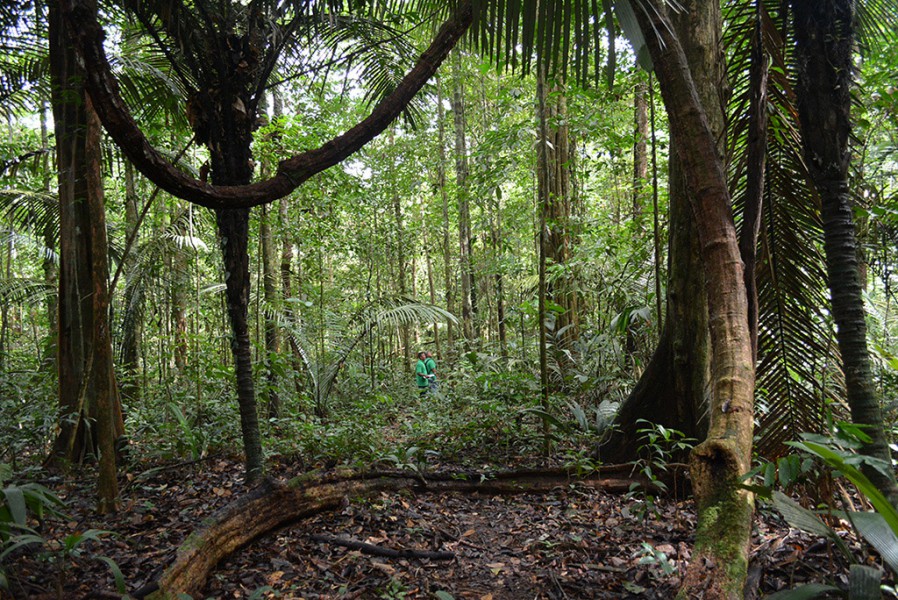By Apoorva Joshi / Mongabay
This is the first in a two-part series on gold mining in Suriname. Read the second part.
- High gold prices are leading to an increase in mining activity.
- Mining activities threaten Suriname’s primary forests, some of the most-intact in South America.
- Mercury released from the mining process can be toxic, and is showing up in human population centers far downstream.
Record high gold prices over much of the past decade have triggered a massive gold rush across much of the Amazon basin, resulting in the destruction of thousands of hectares of pristine rainforest and the contamination of major rivers with toxic heavy metals. A newly released report published by the Amazon Conservation Team titled “Amazon Gold Rush: Gold Mining in Suriname” explores the rapid expansion and impacts of gold mining in Suriname through cartography and digital storytelling.
It finds that from 2000 to 2014, the extent of gold mining in the South American country increased by 893 percent.
While the Amazon rainforests of Brazil and Peru are well-known, Suriname’s vast and ancient rainforests remain one of the world’s best-kept natural secrets, according to the online report. But demand for the age-old elemental metal threatens to destroy them.
“According to our calculations, deforestation caused by gold mining has been growing steadily since the turn of the century and rapidly in the past five years,” GIS and Web Development Coordinator at the Amazon Conservation Team, Rudo Kemper told mongabay.com. The average rate of deforestation since 2000 is close to 3,000 hectares per year, but in 2014 an estimated 5,712 hectares of forest cover was lost to gold mining, he said. The REDD+ for the Guiana Shield regional collaborative study on gold mining shows similar trends, reporting a near-doubling (97 percent increase) of deforestation from 2008 to 2014 and attributing a total of 53,668 hectares of deforestation to gold mining in 2014.

Compared to many other South American countries, Suriname still holds much of its forest cover. According to Global Forest Watch, Suriname lost 0.7 percent of its tree cover from 2001 through 2014 – a small proportion compared to Brazil’s 6.9 percent. However, Suriname’s intact forest landscapes – large, continuous areas of primary forest – do show degradation since 2000.
The Guiana Shield, as Kemper puts it, is one of three cratons of the South American tectonic plate. “It is a tropical rainforest region covered with unique table-top mountains called tepuis,” he said. “It has the largest expanse of undisturbed tropical rainforest in the world, and one of the highest rates of biodiversity.” Suriname is among the most forested countries in the world, as the report highlights. In 2012, 95 percent of the country’s entire area was classified as forest. Globally surpassed only by its neighbor French Guiana, Suriname’s pristine rainforest harbors numerous unique species of fauna like the Guianan cock-of-the-rock (Rupicola rupicola), the famous blue poison dart frog (Dendrobates tinctorius), the red-faced spider monkey (Ateles paniscus), and the pale-throated sloth (Bradypus tridactylus). Jaguars, tapirs, and giant anteaters also call the region home. The mineral-rich Greenstone Belt region, where most of the gold mining in Suriname takes place, is primarily composed of the forested highlands of the Guiana Shield. Conservationists worry that deforestation caused by rapidly expanding gold mining activities is negatively impacting the habitat of many unique species.
Since the 1960s, development and resource extraction incursions into the country’s interior have become commonplace. These encroachments have taken the form of dam-building, logging, bauxite mining, and as of the turn of the century, small-scale and industrial gold mining, the report says. Given that it is one of the world’s smallest countries, Suriname’s annual rate of gold production might not compare to that of larger countries like South Africa, China, Russia or Peru. But relative to its land area, Suriname actually ranks tenth in global gold production.
Partially republished with permission of Mongabay. Read the full article, Gold mining explodes in Suriname, puts forests and people at risk.


